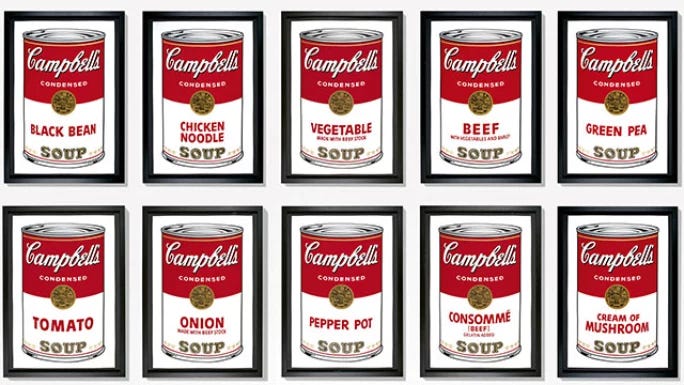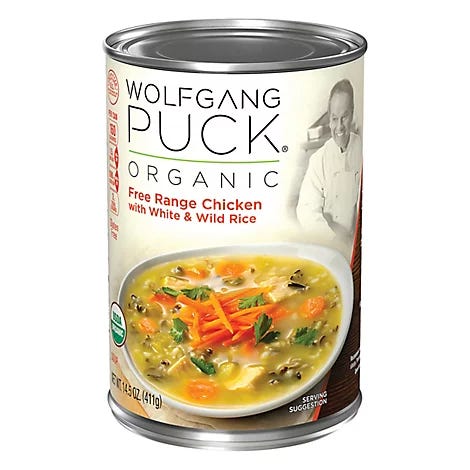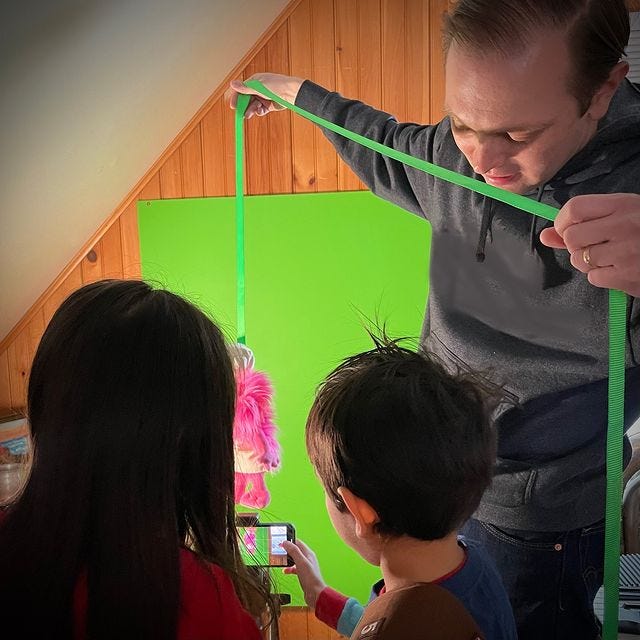Welcome to the Quarantine Creatives newsletter, a companion to my podcast of the same name.
Let’s Talk Soup
As I was cooking dinner earlier this week, I was trying to be present in my thinking. Where am I? How did I get here? Where am I headed? You know, the usual little thoughts that happen over a hot stove.
My attention turned to the simple dish in front of me, a humble soup that I was preparing from scratch. I don’t even know what to call this particular meal, maybe a form of chicken noodle, but also some garden veggie? It’s really just a good, seasonal soup. Labels not necessary.
I couldn’t even tell you the recipe per se, just the process. My soups usually start with onion, garlic, and sometimes fresh ginger sautéed in olive oil with some spices like thyme, oregano, sage, and black pepper.
Then, I chop whatever veggies I have on hand and add them to the pot to sauté. This week included carrots, celery, turnips, parsnips, and shiitake mushrooms. I try to use local, organic produce whenever possible, so in the winter in Massachusetts, root vegetables reign supreme. (The celery was the only “exotic” in the mix, having come from my local supermarket by way of California.)
Whenever we roast a whole chicken, I save the bones and boil them in water to create a rich stock (you can do this with one of those grocery store rotisserie chickens or even the bones leftover after buffalo wings). After a few hours of simmering on the stove, I filter the bones and other chicken parts out with a mesh sieve and then store the stock in Mason jars in my freezer. The soup I ate this week started as stock back in December and has spent the last two months in my basement deep freezer.
After adding a few jars of stock to the pot with some water, I toss in noodles to boil in the broth (this time, it was an orzo made from cassava flour). Just before serving, I liberally add salt and taste test it a few times to make sure it’s acceptable to our palates.
It took less than an hour to assemble and serve, but what a journey I had taken to get to a point where any cooking came easily!
For most of my life until maybe the last 5 years, soup was something that came in a can and was heated in a microwave. As a child, it would’ve been a humble can of Campbell’s.
In my 20s, as my palette developed, a fancier Wolfgang Puck variety like “Free Range Chicken with White and Wild Rice” would’ve been more my speed. (Side note: Apparently, Wolfgang Puck was purchased by Campbell’s back in 2008, although it’s unclear to me who makes the soup these days.)
It has taken some education on my part to learn that processed is not always better, and that the closer to nature I can eat, the more I can truly feed myself in both a literal and spiritual sense. After seeing the big picture, it still took many years of work to gain the skills and confidence to just “throw together” a simple soup.
Needless to say, the half-semester I had of home economics in seventh grade taught me to bake mediocre chocolate chip cookies, but not to actually feed myself.

It occurs to me that had that home economics class stretched for a few years longer and included more practical lessons, I would’ve had a major head start on this journey, rather than wandering for 2+ decades before finding a path. But it also doesn’t matter when you start, only that you do.
Childhood Curiosity
While my food education may have been lacking, one helpful support that I received early on was learning how to make home videos. My parents let me and my friends use their camcorder to make all kinds of silly movies. My dad at one point even built a small “studio” for us in our basement out of blankets and work lamps. We loved it!
Without that early foundation making home videos, attending TV summer camps (what, you didn’t do that?!), and even producing a public access show in high school, I don’t think I would be where I am today.
Those memories were with me when I was watching an episode of Sesame Street with my kids recently. There was a shot where Gonger (one of the newer Muppets on the show) was “flying,” and I pointed out that it was actually accomplished with a green screen. They were immediately intrigued- “what’s a green screen?!”
My first impulse was to find a YouTube video where the concept was explained in under three minutes and hand my kids the phone, but then I thought back to my dad’s generosity and I saw a chance to share my own expertise with them in an organic way. After all, they posed the question!
So over the last two weeks, we’ve been exploring the wonderful world of chroma key. We built our own green screen out of plywood and some Home Depot paint, then mounted it on a wall in my office. We started with some basic background replacements- adding my son to Elmo’s World and my daughter to Paris, for example.
But last weekend, we took it one step further, by recreating the exact shot where Gonger flies over Sesame Street which had initially inspired this whole adventure. The end result wasn’t perfect, but it gave them the basic principles of how a green screen and editing work.
Why go to that effort, especially in an era where apps like TikTok and Zoom make background replacements easy and intuitive, often without the need for a green screen, special lighting, or post-production?
I think it goes back to that soup. I want my kids to understand how things are made and that things can be made. Whether it’s building and painting the green screen itself or composing and editing a shot, I want them to realize that their dreams and ideas can be turned into reality with some thought and hard work. Plus, a green screen still keys cleaner than those funky TikTok edges.
I also want my kids to question what they see on their screens and to realize that almost everything is curated, whether it feels that way or not. Gonger isn’t flying- he’s a bit of felt and fur on a guy’s hand that will be superimposed over other footage, and it takes the efforts of dozens of people, from gaffers to editors to pull off that little gag.
Does knowing how the trick is performed ruin it for the audience? Maybe for some people, but I know since childhood it made my love for TV and film deeper, and I sense that same impulse in my kids. The what is cool, the how is WAY cooler!
I posted about this whole project on Instagram and tagged the puppeteer who plays Gonger, Warrick Brownlow-Pike. He was very excited to see my kids learning this skill and even sent me a post he had done that showed the behind-the-scenes of exactly how the shot we were recreating was pulled off!
When I shared this post with my kids, they were blown away! Not only did they get to hear from the guy who made something they admired, but they also got to see how closely we had replicated the process.
Will either of them grow up to be a producer, director, VFX artist, or puppeteer? I have no idea. I’m less interested in teaching the exact skill than I am teaching the act of creating and the self-confidence that they can build it!
Whatever it is that you want to build this week, whether it’s a simple soup, a few more pages of that novel or script, a cool shot for a video, or a rocking horse carved from wood, I hope you’ll think about with whom you can share what you build and how you might inspire them to create something on their own too.
Speaking of Creations
As many of you know, I spent more than a decade using video to teach people how to repair things around their houses. I loved the feeling of demystifying something complicated for viewers and showing where the pitfalls of a project are.
Last month, I purchased a new Lithium Ion battery for my RV, which also meant having to upgrade to a compatible charger. It’s niche and nerdy, but if you’re interested in seeing the process, I made a YouTube video with my GoPro as I was working (my first in this style). I have no idea if I’ll end up doing more or not, but it was a fun learning process. Check it out!
What’s Next
Thank you to all of you for your kind notes after last week’s newsletter! (If you missed it, here it is).
I am in the process of pitching new guests for the podcast and formulating ideas for how this space evolves in real time. I’d love to continue to hear from you about what you value from this newsletter (or if this is just set to go right to the Trash too, let me know why).
Have a great week all!
If you have questions, comments, thoughts, ideas, or anything else that you’d like to share, please feel free to email me anytime.
If you’d like to catch up on past episodes of the Quarantine Creatives podcast, they can be found on Apple Podcasts, Spotify, or wherever you listen.
Please consider sharing this with a friend that you think might enjoy reading this, or better yet, share it on social media so you can tell hundreds of friends!
If you’ve missed past issues of this newsletter, they are available to read here.
Stay Safe!
Heath










